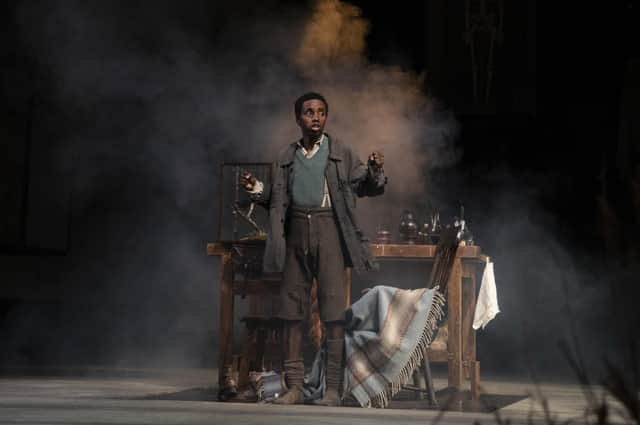Either you’ve got the next Les Miserables on your hands, or you’re responsible for unleashing the Lord of the Rings musical on the world. There’s rarely much middle ground.
But if the CFT was going to take a punt on any novel, it felt right that The Taxidermist’s Daughter was their pick.
Written and adapted for the stage by Fishbourne’s Kate Mosse - of bestselling book Labyrinth fame - and set in and around Chichester, where better for its debut?
The tale begins with a group of men mysteriously invited to a remote church as part of some local festivities - only for the horrified parishioners to discover it has been filled with thousands of birds.
It’s an ominous sign of things to come. Who put them there? What does it mean? And what links the men who were invited by this unknown figure?
As the bodies pile up, it’s up to the titular character to unmask the killer and solve the mystery.
Mosse has clearly taken inspiration from the Gothic greats - instead of the windswept moors of Wuthering Heights or the frozen wastes of Frankenstein, we have the rain-battered Fishbourne marshlands.
And the stagecraft to bring it to life was impressive, with projections of rain pummelling the stage floor, waves crashing over sea walls, and a booming sonic landscape to match.
With taxidermied birds in glass boxes of various shapes and sizes also adorning the stage, it was a feast for the senses.
But while all the ingredients were there, the script was not enough to bind it all together.
I began feeling somewhat confused by what was going on, with several disparate plot threads being established, but I had faith it would all become clear.
And while these were woven together in time, it all felt far too convenient - and clichéd.
Lunatics escaping from a sanitarium? A main character with amnesia following a traumatic childhood accident, that just so happens to regain it in time to solve the mystery?
There was also too much exposition to explain the characters’ actions and feelings, particularly as the plot began to cave in under the weight of its own incredibility.
A case in point: it’s hard to sympathise with a killer who sews their victim’s eyes and mouth shut while they’re alive, even if they deserved it.
You’re less inclined to buy it when the protagonist barely bats an eyelid as the murderer shows off their gruesome handiwork.
The end result is much like one of the heroine’s creations: enjoyable to look at, but filled with padding.
Until April 30.

